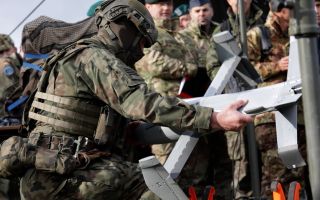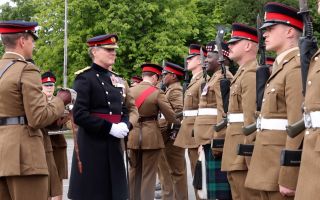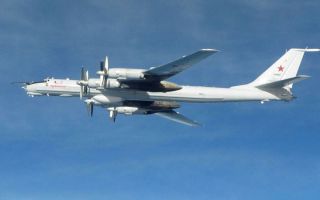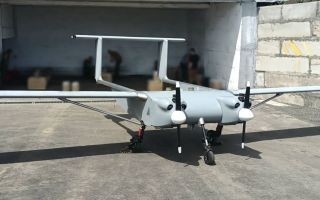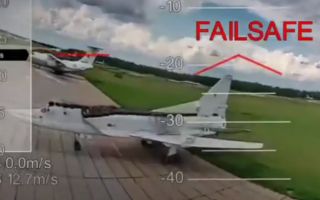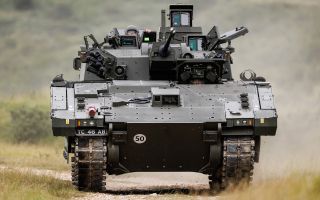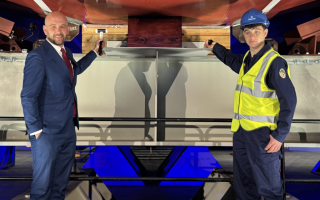British troops train to reinforce Nato's eastern flank and avoid kamikaze drones
Stretched out across a sandy corner of northern Poland, 2,500 British troops are taking part in one of several huge Nato manoeuvres.
Exercise Immediate Response is designed to test their ability to quickly reinforce the alliance’s eastern flank and deter Russia.
With Ukraine just 450 miles to the east, 1 Royal Welsh has built a trench system to practise concealment, hiding from the threat of kamikaze drones.
It is an opportunity to learn the tactics that Russian troops could use against them, says Captain Max Burns, an instructor at the Infantry Battle School in Brecon.
He told Forces News that as part of Operation Mobilisation, the Army's returning to a conventional warfighting stance, which is "shaping everything that we're doing".
He said the soldiers were preparing to fight "an enemy that has capabilities like air, has capabilities like drones, has capabilities like artillery".
"All those things have a massive impact on the way you train," he explained.
"You can't have big logistics hubs, people all centralised together. You constantly have to be spread out, you constantly have to be dug in - and if you're not doing those, you have to be moving."
Exercise Immediate Response is part of a much larger Europe-wide exercise called Steadfast Defender - involving 90,000 personnel from all 32 Nato member states.
Infantry and armour
On this exercise in Poland, the British Army deployed 12th Armoured Brigade Combat Team to the Drawsko Pomorskie Training Area, with two of the brigade’s battlegroups - one from 1st Battalion The Royal Welsh and another from 1st Battalion The Mercian Regiment
Attached to each of them is a squadron of Challenger 2 tanks.
12 Brigade is also commanding a US Army squadron from the 10th Cavalry Regiment and their Bradley fighting vehicles.
For these mechanised infantry units, it is a chance to practise large-scale manoeuvres alongside the Army’s Challenger 2 tanks.
Warrant Officer Luke Mason from 1 Mercian said it was a great opportunity.
"It shows them the type of force that we have when we come together as a battle group and as a brigade," he said.
"If we were called forward into any type of conflict, I think it fills up with that confidence that we'll be going in en masse, well-trained, well-armed and well-prepared."
As Nato marks its 75th anniversary, European security seems more fragile than at any time since the Cold War.
This exercise though, is a chance for the alliance to display both deterrence and firepower and send a a signal to the Kremlin of Nato's solidarity and strength.

